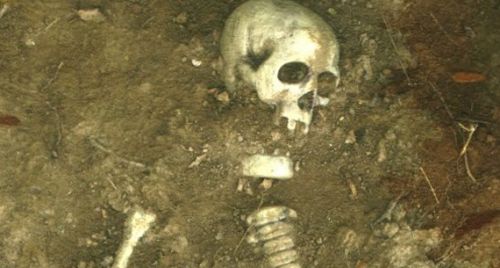
Recently, three skeletons were found at an excavation site at Juna Khera in Nadol, Pali district dating belonging to the Chahamanas kingdom of 10th and 11th Century. The skeletons were found without any ornaments or antiquarian remains. Surprisingly these were only slightly decomposed as per Hridesh Sharma, Director of Archeology & Museums.
Another interesting fact is that the skeletons were found on the floor of the courtyard and were not buried. As a result, they are assumed to be contemporary. However, the exact date of the skeletons can only be confirmed after the carbon dating.
It’s believed that the Chahamanas (later called Chauhans) dynasty declined in the 13th Century and the rulers abandoned Nadol because of the repeated attacks by invaders. The site is protected under the Rajasthan Monuments and Antiquities Act 1961.
 Juna Khera Excavation Site (Courtesy: Times of India)
Juna Khera Excavation Site (Courtesy: Times of India)
When the authorities visited the site, they decided to re-excavate the site to unveil its town-planning, social stratification, architecture, and culture sequence of the ancient settlements.
During the survey in 2015, a proof of human settlement was found at the site and then the authorities sought permission from the Archaeological Survey of India. Reportedly, in the last two excavation sessions, remains of houses, residential areas, and workshops were exposed.
Apart from the proof of mud mortar, finished and unfinished stones, iron clamps, the traces of living rooms and kitchens were also discovered. Besides, pottery, copper rings, beads, and coins with the word “La” were recovered from the site.
Furthermore, the excavation gave away evidence of agricultural products that were used during that era. These include Moong, Moth, Black gram, Wheat, Rice, Arhar, and Kulthi. These grains have been sent to the Birbal Sahni Institute of Palaeosciences in Lucknow for dating and study. Besides, it was revealed that animals like sheep, cattle, and camel were reared for milk.
It’s known that many European scholars in the 19th Century have visited the site and have written about the material found at the site. It’s believed that the area was occupied by the Stone Age man since lower Paleolithic period.







